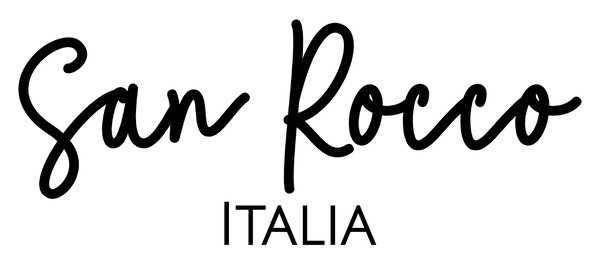
Identifying Authentic Italian Leather: Complete Guide
Share
Over 80 percent of luxury brands consider authentic Italian leather the gold standard for style and craftsmanship. There is a reason true Italian leather holds such esteem, from the subtle aroma of natural hides to the unmistakable texture shaped by generations of artisans. Knowing what sets genuine Italian leather apart helps buyers avoid costly mistakes and find pieces that will last for years to come.
Table of Contents
- Defining Authentic Italian Leather Standards
- Types Of Italian Leather And Their Traits
- Hallmarks Of Genuine Italian Craftsmanship
- Proven Methods For Authenticity Verification
- Common Mistakes And How To Avoid Fakes
Key Takeaways
| Point | Details |
|---|---|
| Authentic Italian Leather Attributes | Recognized for exceptional quality, true Italian leather is full-grain, handcrafted, and naturally aged, ensuring durability and unique character. |
| Types of Italian Leather | Notable variations such as calfskin, toro, and vacchetta offer distinct characteristics, each contributing to the leather’s overall aesthetic and performance. |
| Craftsmanship Standards | Authentic Italian craftsmanship emphasizes generational skill, meticulous handwork, and sustainable methods, resulting in a superior product with rich historical context. |
| Avoiding Counterfeits | To avoid imitation, buyers should focus on sensory details like natural aroma and texture while being cautious of uniform patterns and pricing misconceptions. |
Defining Authentic Italian Leather Standards
Authentic Italian leather represents the pinnacle of craftsmanship and quality in the fashion world. As Armosshoes highlights, genuine Italian leather is characterized by its smooth, textured feel, rich natural aroma, and intricate craftsmanship.
The hallmarks of authentic Italian leather go far beyond surface-level aesthetics. These premium leathers are distinguished by several critical attributes:
- Exceptional full-grain leather quality
- Meticulous handcrafted production techniques
- Natural, unaltered leather surface
- Superior durability and aging characteristics
- Minimal processing to preserve leather’s inherent qualities
Traditional Italian leather production involves multiple generations of artisanal expertise. Skilled craftspeople carefully select premium hides, meticulously treat them using time-honoured techniques that maintain the leather’s natural grain and character. Each piece tells a unique story of heritage, with subtle variations reflecting the individual animal’s history and the artisan’s touch.
For discerning buyers seeking true Italian leather, understanding these nuanced standards is paramount. Learn more about Italian leather certification in our comprehensive guide on Italian leather standards, which provides deeper insights into authenticating these extraordinary materials.
Types Of Italian Leather And Their Traits
Italian leather represents a rich tapestry of materials, each with unique characteristics and remarkable qualities. As Zerow reveals, the leather landscape includes diverse types such as calfskin, prized for its softness and elegance, toro with its impressive thickness and structure, and vacchetta celebrated for its natural texture that gracefully ages.
The primary classifications of Italian leather showcase distinctive traits:
- Calfskin: Incredibly soft, smooth, lightweight
- Toro: Thick, robust, structured leather
- Vacchetta: Natural grain, develops rich patina over time
- Full-grain: Maximum durability, maintains original hide characteristics
- Top-grain: Smoother surface, slightly processed
According to Quantum Bazaar, full-grain and top-grain leathers represent two fundamental categories. Full-grain leather maintains the entire natural surface, offering unparalleled durability and an authentic look, while top-grain leather provides a more refined, smoother appearance through minimal surface adjustments.
For enthusiasts seeking deeper understanding of these exceptional materials, our comprehensive guide exploring the nuanced differences between Italian leather types offers invaluable insights into the world of premium leather craftsmanship.

Hallmarks Of Genuine Italian Craftsmanship
Italian craftsmanship represents the pinnacle of artisanal excellence, with a heritage that transforms leather production into an art form. As Armosshoes highlights, genuine Italian craftsmanship is distinguished by three fundamental elements: meticulous attention to detail, traditional vegetable tanning processes, and the use of premium full-grain leather.
The core hallmarks of authentic Italian leather craftsmanship include:
- Generational skill passed through family workshops
- Handcrafted techniques with minimal machine intervention
- Commitment to sustainable and traditional production methods
- Extraordinary precision in cutting and stitching
- Rigorous quality control at every production stage
Traditional vegetable tanning represents a cornerstone of Italian leather artistry. This time-honored process involves using natural tannins extracted from tree bark, creating leather that develops a unique character over time. Unlike industrial chrome tanning, vegetable tanning produces leather with deeper, richer colors and enhanced durability, allowing each piece to tell a unique story of craftsmanship and heritage.
Learn more about the intricacies of Italian leather craftsmanship in our comprehensive guide, which explores the deep-rooted traditions that make Italian leather truly exceptional.
Proven Methods For Authenticity Verification
Authentic Italian leather has distinctive characteristics that discerning buyers can identify through careful examination. As Armosshoes reveals, genuine Italian leather is characterized by its smooth, textured feel, rich natural smell, and intricate craftsmanship that sets it apart from mass-produced alternatives.
Key authenticity verification methods include:
-
Sensory Examination
- Smell: Natural, subtle leather aroma
- Touch: Smooth yet slightly textured surface
- Flexibility: Supple with natural movement
-
Visual Inspection Techniques
- Check for consistent, natural grain patterns
- Examine edge finishing and stitching quality
- Look for subtle imperfections indicating handcrafting
Professional authentication goes beyond surface-level inspection.
Experts assess leather through multiple criteria, including hide origin, tanning process, and craftsmanship details. Genuine Italian leather typically displays minute variations that machine-produced materials cannot replicate. The leather should develop a rich patina over time, with colors deepening and texture becoming more nuanced.
Discover our comprehensive guide to spotting genuine Italian leather, which provides an in-depth exploration of authentication techniques used by industry professionals.
Common Mistakes And How To Avoid Fakes
Navigating the world of Italian leather requires keen insight and careful discernment. Armosshoes emphasizes that avoiding counterfeit leather begins with understanding the hallmarks of genuine craftsmanship: a smooth, textured feel, rich natural aroma, and intricate manufacturing details that mass-produced imitations simply cannot replicate.
Common mistakes buyers make when purchasing Italian leather include:
-
Pricing Misconceptions
- Believing extremely low prices indicate authenticity
- Assuming all expensive leather is genuine
- Overlooking craftsmanship in favor of brand names
-
Authentication Red Flags
- Synthetic smell instead of natural leather aroma
- Perfectly uniform grain patterns
- Overly stiff or plastic-like texture
- Lack of natural variation in color and texture
Authentic Italian leather tells a story through its imperfections. Machine-made counterfeits often appear too perfect, lacking the subtle nuances of handcrafted leather. Genuine pieces will have slight variations in grain, natural markings, and a patina that develops beautifully with age. The leather should feel supple, breathe naturally, and showcase the unique character of its origin.
Explore our comprehensive guide to identifying genuine Italian leather, which provides expert insights into distinguishing authentic craftsmanship from mass-produced imitations.
Discover Authentic Italian Leather with San Rocco Italia
Authenticity matters when it comes to Italian leather. If you have experienced uncertainty in distinguishing genuine craftsmanship from imitations or have struggled to find leather goods that reflect traditional full-grain quality and artisanal heritage, you are not alone. The article highlights how recognising true Italian leather involves detecting natural grain variations, a rich patina, and the unmistakable aroma of premium vegetable-tanned leather.
At San Rocco Italia, we understand these challenges deeply. Our woman-owned boutique specialises in bringing you luxury handbags and leather goods handcrafted by skilled Italian artisans who uphold time-honoured techniques and use only the finest leathers. You can feel the care in every stitch and appreciate the authentic texture and character that only real Italian leather offers.
Elevate your collection with pieces that tell a story of heritage and durability.
Are you ready to invest in genuine Italian craftsmanship today?

Explore our curated selection and see and feel the difference of true artisanal quality. Visit San Rocco Italia to find your next luxury leather piece crafted with passion and authenticity. For more guidance on Italian leather and how to identify it, you may also find our comprehensive guides insightful. Experience leather that improves with age and enriches your style every day.
Frequently Asked Questions
What are the signs of authentic Italian leather?
Genuine Italian leather typically showcases a smooth, textured feel, a rich natural aroma, and intricate craftsmanship. It features natural grain patterns and subtle variations, indicating it is handcrafted rather than mass-produced.
How can I differentiate between full-grain and top-grain Italian leather?
Full-grain leather maintains the entire natural surface of the hide, providing maximal durability and an authentic look. Top-grain leather, on the other hand, is slightly processed for a smoother surface but may sacrifice some natural characteristics.

What is the importance of vegetable tanning in Italian leather?
Vegetable tanning uses natural tannins from plant sources, producing leather with deeper colors and greater durability. This method allows the leather to develop a unique character over time, unlike chrome-tanned leathers, which can be less durable and visually appealing.
How do I verify the authenticity of Italian leather?
To confirm the authenticity of Italian leather, look for consistent natural grain patterns, examine the quality of craftsmanship (e.g., stitching and edge finishing), and use sensory examination methods like checking the leather’s aroma and texture. Real Italian leather will also develop a rich patina over time.


